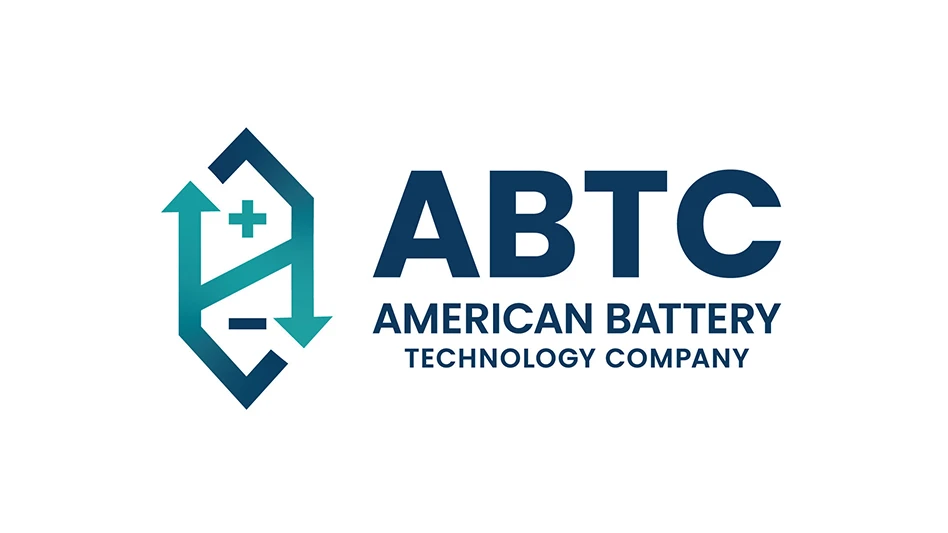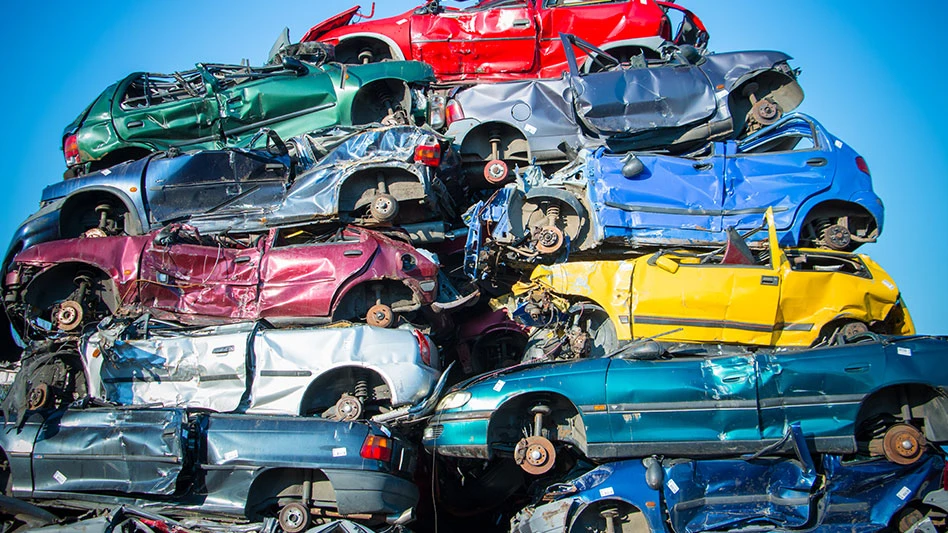During the 1990s, scrap yards could choose their shredder drives. The rule of thumb applied to drive selection was that alternating current (AC) wound-rotor drives were preferable for super-sized shredders (6,000 hp and above) while direct current (DC) drives were suitable for large and mid-size systems (5,000 hp and below). However, in 2004 most shredder manufacturers are only offering AC wound-rotor drives.
What happened to DC shredder drives? And while AC wound-rotor drives predominate in the start of this decade, are they the AC "squirrel cage" and diesel drives dominated the early days of the auto shredder industry.
CURRENT EVENTS. AC "squirrel cage" and diesel drives dominated the early days of the auto shredder industry. Sabine Mueller of Mueller Engineering, New Berlin, Wis., says, "As shredders increased in size, AC wound-rotor drives were developed to offer more power." Mueller Engineering started installing and maintaining AC systems in the 1960s.
|
AC HOLDS MARKET SHARE |
|
For most established shredder operators and shredder manufacturers, AC motors, particularly specialty motors produced overseas, have long held market share leadership. Motors made by manufacturers such as Schorch of Germany, Alstom of France, Sweden’s Hagglunds Drives and WEG Motors of Brazil, can be found powering auto shredders in North America. Several of the leading shredding plant designers and manufacturers have long-standing relationships with these international makers of AC motors. When Newell Industries Inc. was building shredding plants throughout the world in the 1970s and ‘80s, the plants were often powered by AC motors provided by Schorch. Sy Boari, currently a vice president with The Shredder Co. and formerly an executive with Newell Industries Inc., says some 300 Schorch motors have been sold into the North American auto shredder market. Boari says the up-front cost of Schorch motors can be much higher, but that the motors are designed to power auto shredding plants and have an unmatched track record of powering shredder plants reliably with minimal downtime. |
"During the ‘90s, DC drives were introduced, first as helpers for AC wound-rotor drives and then as independent drive systems," Jim Keck, president of Joliet Equipment of Joliet, Ill., says. "DC drives had some advantages, but the main one was price. Reconditioned DC motors, primarily from railroad locomotives, were readily available and inexpensive. By contrast, most AC wound-rotor drives were manufactured in Germany and mainly purchased new."
Over the last few years, the use of AC wound-rotor drives has grown to the point where they now dominate the market. But DC drives may be poised for a comeback.
One notable trend has led the auto shredder industry to move toward AC motor drives: consolidation.
Consolidation within the recycling industry has led to large organizations with several scrap yards. These organizations have resources to start up and to operate the biggest shredders they can get. Therefore, for the last few years, the number of super-sized shredders sold has been steadily increasing.
AC wound-rotor drives have the extra power needed in the 6,000-plus-hp range. Throughput is everything for large recycling organizations, particularly with yards in major metropolitan areas.
However, the industry is always evolving.
|
COMPARING AC AND DC DRIVES |
|
AC Wound-rotor Drives: Advantages: • Best choice for 120-inch super-sized shredders • Can run effectively above rated loads • Lower initial cost for 6,000 hp and above Disadvantages: • Liquid rheostat maintenance and cooling water requirements • Power consumption can be inefficient • High in-rush (starting) and peak current • Motor brush maintenance DC Drives: Advantages: • Lower initial cost for 5,000 hp and below • Short lead times for new systems • More torque at lower speed • Complete speed control • Jog forward and reverse • Brake to stop Disadvantages: • Control electronics maintenance • Motor brush maintenance |
A scrap yard owner with two yards in rural areas is planning on opening a third yard with an auto shredder. He says, "A recent increase in the price of scrap steel has created an opportunity for smaller, regional scrap yards to break into the auto shredding market. We need a 4,000-hp shredder drive and are very price conscious. A DC drive with two reconditioned DC motors running in tandem may be the best solution for us."
In addition to consolidation among scrap yards, a second issue working against DC shredder drives has been misunderstandings related to drive maintenance.
MAINTENANCE MATTERS. AC wound-rotor drives with liquid rheostats (resistors for regulating a current by means of variable resistances) have primarily been installed and maintained by companies such as Mueller Engineering.
"A scrap yard typically has a maintenance contract with Mueller. We come out twice a year to do preventative maintenance," Mueller says. "People think AC drives and liquid rheostats are maintenance free, but they require just as much service as a DC System."
Joliet Equipment and the former OMC Controls were two providers of DC drives in the 1990s. Often, the companies were criticized for not making arrangements with scrap yards for maintenance.
Yards ran the DC drives until they broke down and then called for emergency service from Joliet or OMC.
In the absence of regular preventative maintenance and servicing, DC drives developed a reputation for being expensive to maintain.
DRIVE PROVIDERS. Shredder manufacturers typically sell a shredder drive as part of a complete shredder system, reselling and outsourcing the drive portion of the system.
For AC wound-rotor drives, shredder manufacturers buy new motors from Germany and may hire Mueller or another company to install and maintain the liquid rheostat. This has proven to be a reliable solution for manufacturers to offer their customers.
Joliet Equipment still sells and refurbishes motors, but no longer provides the controls for DC shredder drives, and OMC Controls has gone out of business. This vacuum in providers of DC shredder drives is one reason shredder manufacturers have preferred to promote AC drives.
For the past few years, Quad Plus Inc., Chicago, has been attempting to fill the void left by these manufacturers, providing service for yards with DC drives and selling new DC shredder drive systems.
Chris Tooley, president of Quad Plus, says, "Though we are not well known in the recycling world, Quad Plus is important because we are giving scrap yards an alternative to AC systems."
Companies buying an auto shredder will need to do their homework regarding appropriate drive systems. AC wound-rotor drives are probably the best choice for super-sized shredders, but DC drives can be a cost-effective alternative for systems of 5,000 hp and below.
The author is a sales engineer for Quad Plus Inc., Chicago, www.QuadPlusInc.com. The company is an engineering and system integration company specializing in DC shredder drives and automation.
Get curated news on YOUR industry.
Enter your email to receive our newsletters.

Explore the January 2005 Issue
Check out more from this issue and find your next story to read.
Latest from Recycling Today
- Circular by Shapiro releases "5 for Five" sustainability series
- Graphic Packaging set to close Ohio CRB facility
- Ameripen voices support for Maryland EPR bill
- Matalco to close Canton, Ohio, plant
- Maryland county expands curbside recycling to include electronics
- California EPS ban will be enforced
- YKK AP America introduces BetterBillet
- Fresh Perspective: Cameron Keefe






